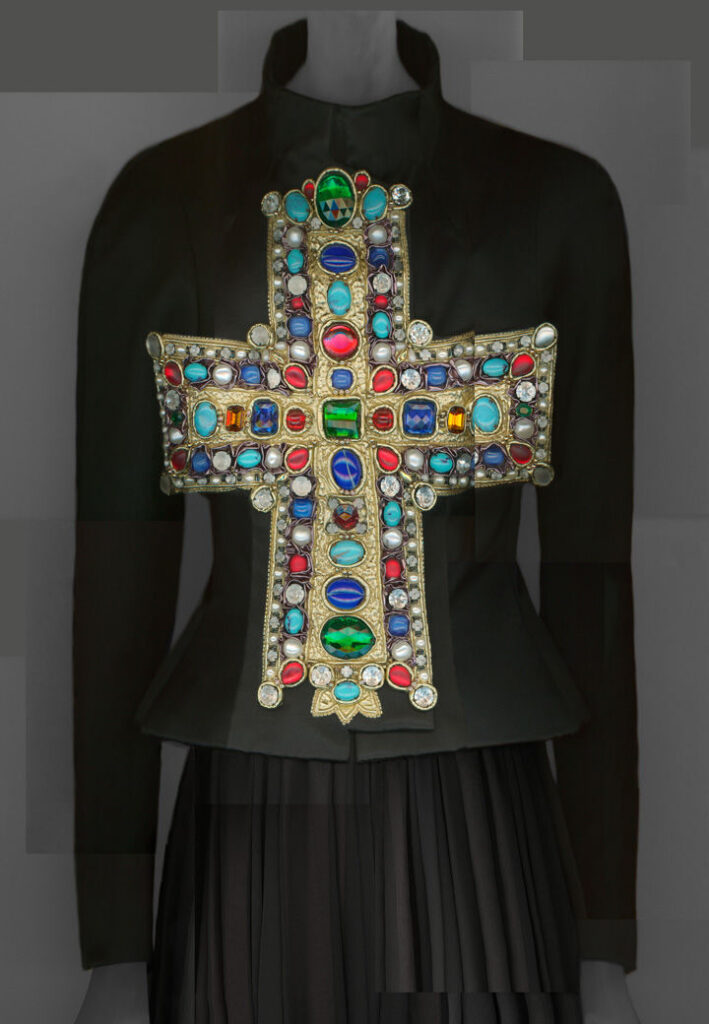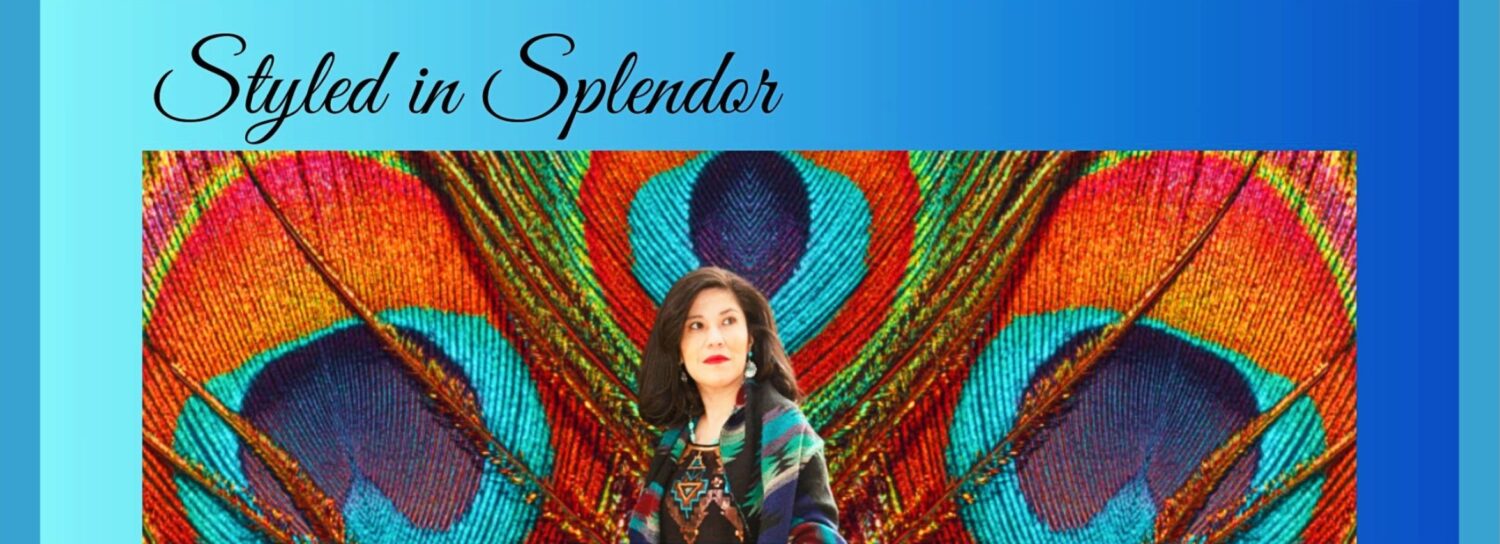
Christian Lacroix’s “Gold-Gotha” ensemble was one of the strikingly beautiful pieces displayed at the 2018 exhibition of Heavenly Bodies: Fashion and the Catholic Imagination. Lacroix’s “Gold-Gotha” consists of a black suit ensemble—a black skirt and a black fitted jacket, which includes more than one hundred brightly colored crystal and seed beads. The focal point of the jacket is a gold leather cross embellished with colorful, magnified beads—turquoise, lapis lazuli, rubies, pearls, agate and diamonds. LaCroix upscaled the jewels in size and luster to offer a more elaborate effect, much like the effect of large-scale frescoes in cathedrals.
This well-constructed, aesthetically pleasing ensemble could be a modern abbreviated example of the priestly garments worn in the Old Testament. In Exodus 39, God had a specific vision of how he wanted the priests to appear, while carrying out their priestly duties. The materials used in the construction of garments consisted of quality fabrics and specific colors: “blue, purple and scarlet yarn” and “finely twisted linen.” Hammered gold was intricately woven into the fabrics. Resplendent jewels added the finishing touches to the priestly garments, reflecting the Lord’s own glory. The central piece was the breastplate, its square shape containing the gemstones arranged in rows of four. On the first row: carnelian, chrysolite and beryl; second row featured turquoise, lapis lazuli and emerald; third row included jacinth, agate, and amethyst; and the final row contained topaz, onyx, and jasper.
Though the jewels were beautiful in and of themselves, they also carried meaning: “they mounted the onyx stones in gold filigree settings and engraved them like a seal with the names of the sons of Israel.” Furthermore, LaCroix in naming his piece, “Gold-Gotha” further hints at a deeper religious meaning. Golgotha is believed to be the site of Jesus’ crucifixion, the final location of Jesus’ earthly ministry. LaCroix not only chose to embellish the name of this sacred place with an added “d” (Gol-d), he has also glorified the cross, by adding the large-scale colorful beads on his suit ensemble.
While this haute couture piece merits exhibition and appreciation for its form and beauty, it is also a piece that feels as though one can wear off the runway. But that doesn’t mean one necessarily should. Underneath the adorned cross is a little black jacket that one could wear over a nice dress or pair with a long skirt for a special event. But is it a jacket one can casually wear with a pair of jeans? For some in fashion community, it appears that way. The jacket was featured on the 1998 front cover of Vogue magazine. On the cover, a fresh-faced young model with long, wavy blonde hair laughs playfully at the camera as she wears this jacket with a pair of jeans. The jeans are not even a dark wash or a plain blue denim, but stone-wash jeans which further amplify a casual look. In this case, the magnificent jacket feels not so magnificent anymore.
For one, it would seem more suitable for a piece like this to be handled and used appropriately. For instance, the piece could be further enhanced by exhibiting it alongside other beautiful, sacred pieces. While the styling might be appreciated as a “cool” look, it doesn’t serve the function it ought to—to be admired for its beauty and note to the sacred. The Catholic Church had initial misgivings about lending its most sacred pieces to be displayed at this exhibition. Some of these pieces had never seen the light of day outside the walls of the church. Granted, these pieces had been used only for religious duties. But the other non-ecclesiastical works chosen for the exhibition had been designed by fashion designers who been inspired by Catholic imagery. They had received a moment of divine illumination—artists (such as Michelangelo) have had these inspirations throughout the centuries. In this case, these works also have a sense of the sacred by way of their divine inspiration.
The Heavenly Bodies exhibition served as a way to highlight the pieces in an appropriate way. One gets to appreciate the pieces in a way that helps one look upwards instead of looking horizontally. It is good for certain objects to remain in an elevated place so as to point to something greater and beyond.
Christian Lacroix. “Gold-Gotha” ensemble, autumn/winter 1988–89 haute couture. Courtesy of Maison Christian Lacroix, Paris.
Source: https://www.metmuseum.org/exhibitions/listings/2018/heavenly-bodies/art-and-fashion-images
